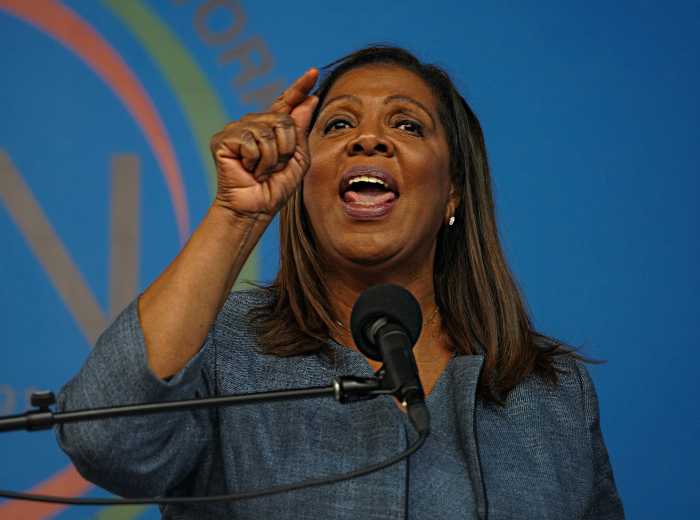Merce Cunningham’s multi-dimensional dance challenges notions of space
State-of-the-art acoustics promised an ideal starting point for a staging of Merce Cunningham Dance Company’s “Ocean,” presented in the round at the new Rose Theater in Columbus Circle at the Time Warner Center July 12-16.
The theater was modified to accommodate boxes all around the perimeter of the elliptical space, though rows of seating remained at the front of the stage, even though Cunningham has refuted the concept of front. This Lincoln Center Festival offering provided an opportunity to see Cunningham’s spatial notions at work. I was privileged to sit in an upstage box next to Cunningham’s on opening night—to see the dance nearly from his point of view, in a literal sense. An aura of decorum and civility pervaded the house. The evening I was there the audience included Cunningham, the choreographer who is to modern dance what Duchamp is to modern art.
Eleven years ago, “Ocean” was performed in Damrosch Park at Lincoln Center as part of the Festival. The octogenarian choreographer wanted to bring it back this year. It proved a visual and aural feast with the master at the head of the table. The dancers, at the center of attention, represent his life’s work in a three-dimensional tableau of movement. As spectators, we were like children peering into an aquarium.
Undersea depths are evoked in the intense colors of the costumes and with lighting in Marsha Skinner’s decor. One hundred twelve musicians play Andrew Culver’s “1-95” in the uppermost rung of the Rose, guided by stopwatches. Meanwhile a bank of onstage laptop musicians play David Tudor’s “Soundings: Ocean Diary,” sampled porpoise, seal and other noises. Heard from speakers hung from above, the sounds seem to echo from the deep. The two layers often respectfully alternate but create a seamless evocative fabric around the dance, which is choreographed by chance.
Selections of six or more dancers create tumult or calm in almost constant flux. Their apparent solipsistic journeys engage with varying speed and buoyancy. But measured and precise meetings of two or three punctuate the dance with complex and considered tableaux. Dancers assume crab or starfish shapes with apparent ease, and limb for limb.
The piece is possibly the most ‘representational’ in Cunningham’s oeuvre. It is the last of his collaborations with John Cage, who died in 1992. Cage’s closest associate, Tudor was selected to carry forth the musical concept.
New dancers are notably steady, strong and concentrated, embodying the serenity that characterizes Cunningham dance, and showing integrity more often than effort with the difficult movement. Seasoned Cunningham dancers inspire awe with their body’s wisdom, even when those bodies are less stable from age or injury. On opening night, the ballet-trained Lisa Boudreau shows incredible grace and strength. Sitting almost on the stage, one notices the very small differences between one and the other and though the style of movement is thought to be formal and impersonal, such proximity lends a remarkably sensual intimacy.
Temperatures seem to drop and lower as the dancers don teal-blue and purple, seal black or brilliant yellow-orange unitards; the many costume changes give structure to the dance and define the illusion of depth. Time is measured on actual digital clocks placed at intervals around the theater and stage like scoreboards at a game; the fourth dimension is palpable and constant. The advancing minutes guide the dancers because phrases and intricately timed interactions are based on counts. We are acutely conscious of the passage of the dance’s 90-minute duration, as one aspect of our active participation in piecing together the collage of elements.
“Ocean” is choreographed radially, and the many perspectives around the room are unique. Two spectators may see opposite sides of the dance. Ringside seats extend ballet’s notion of showing as much of the body as possible—of celebrating the body—by providing views of the dancers from all sides. In evoking the randomness and chaos of sea life, Cunningham also projects a sense of order and clarity in the dancer’s forward and upward gazes.
gaycitynews.com
































